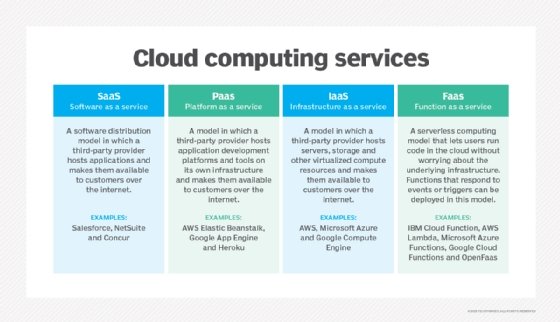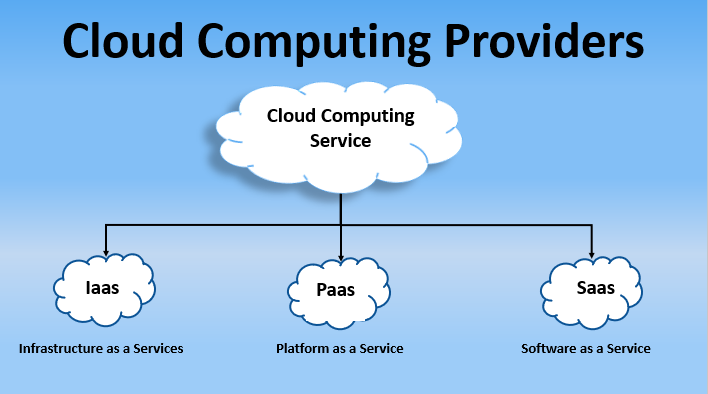Essential Cloud Services for Modern Services: A Full Summary
Essential Cloud Services for Modern Services: A Full Summary
Blog Article
Transform Your IT Infrastructure With Cloud Services
In today's fast-paced organization landscape, the role of IT framework can not be undervalued. Embracing cloud services offers companies a myriad of benefits, from increased versatility to boosted partnership. However, the trip to changing your IT infrastructure is not without its obstacles. As modern technology proceeds to advance, remaining ahead of the contour and making educated decisions about cloud remedies is extremely important. The key depend on understanding how cloud services can reshape your company's IT landscape and drive development.
Advantages of Cloud Services
Leveraging cloud solutions offers companies a scalable and cost-efficient service for handling their IT framework. One of the key advantages of cloud solutions is the adaptability they offer.

In addition, cloud services advertise cooperation and remote work by providing staff members with accessibility to data and applications from anywhere with a net link. This availability enhances efficiency and permits seamless cooperation among staff member, no matter their physical area. Overall, the advantages of cloud services are large, making them an attractive option for organizations aiming to modernize their IT facilities.

Movement Strategies
To successfully transition to shadow solutions, companies have to very carefully execute and intend migration strategies that straighten with their business objectives and IT requirements. The initial step in this process is to carry out an extensive assessment of the existing IT framework to recognize which applications and information can be moved to the cloud. Organizations needs to prioritize work based upon variables such as safety and security requirements, performance requirements, and compliance laws.
Once the analysis is full, companies can choose the most ideal migration technique. This can consist of rehosting, refactoring, rearchitecting, or rebuilding applications for the cloud setting. It's important to consider elements like time, complexity, and cost constraints when selecting the movement strategy.
In addition, organizations ought to produce a thorough movement strategy that details the timeline, resources, and responsibilities for each and every action of the migration procedure - Cloud Services. Regular screening and tracking are crucial to guarantee a smooth shift and reduce disruptions to organization procedures. By complying with these migration approaches, organizations can open the full possibility of cloud services and drive technology within their IT facilities
Safety Considerations
When integrating cloud solutions right into an organization's IT infrastructure,Ensuring durable safety actions is critical. The shift to the cloud brings one-of-a-kind security factors to consider that must be addressed to safeguard delicate data and maintain functional honesty. One crucial facet to take into consideration is information file encryption both en route and at rest. File encryption aids secure information from unapproved accessibility, guaranteeing that also if information is intercepted, it remains unreadable.
Additionally, carrying out solid gain access to controls is essential. This includes specifying individual authorizations, verification methods, and keeping an eye on accessibility to prevent unauthorized individuals from obtaining entrance to sensitive sources. Routine protection audits and analyses are vital to make sure and recognize susceptabilities compliance with sector guidelines.
In addition, organizations ought to have a durable incident feedback strategy in area to quickly address protection violations or information concessions. This strategy ought to detail steps to contain the event, mitigate damage, and bring back typical operations effectively. By focusing on safety and security factors to consider and applying positive measures, companies can confidently take advantage of cloud solutions while protecting their digital possessions.
Cost-Saving Tips
When enhancing IT infrastructure with cloud services, companies can maximize their budget plan through tactical cost-saving ideas. One efficient way to conserve expenses is by leveraging the pay-as-you-go version offered by numerous cloud provider - universal cloud Service. news This technique permits companies to pay only for the resources they utilize, eliminating the demand go to this site to spend in pricey equipment or software program upfront. In addition, companies can conserve on operational expenses by decreasing the demand for on-site maintenance and support team, as many cloud services provide automated updates and assistance.
One more cost-saving suggestion is to carefully change and monitor cloud click this link use to stay clear of unnecessary expenses. By regularly examining use data and scaling sources up or down based upon need, organizations can ensure they are not spending beyond your means on extra capacity. Taking into consideration hybrid or multi-cloud cloud remedies can additionally lead to set you back savings by enabling organizations to pick the most cost-efficient solutions for each work.
Future Fads
The advancement of cloud solutions is forming the future landscape of IT framework. As we look in advance, a number of vital fads are poised to influence how companies take advantage of cloud services to improve their IT procedures.
One more prominent pattern is the increase of side computer together with cloud services. Side computing brings handling closer to the information resource, reducing latency and allowing real-time data analysis. This trend is particularly critical in industries such as IoT, independent vehicles, and healthcare, where instant decision-making is crucial.
Furthermore, the assimilation of artificial intelligence (AI) and artificial intelligence (ML) capabilities into cloud services is established to redefine how organizations remove understandings from their information. AI-driven automation, anticipating analytics, and individualized consumer experiences are simply several of the means AI and ML are transforming cloud solutions.
Conclusion
Finally, cloud services offer various advantages for organizations wanting to change their IT infrastructure. By carrying out migration techniques customized to details requirements and focusing on safety and security factors to consider, companies can attain expense financial savings and improved effectiveness. Accepting cloud services can lead to a much more competitive and nimble service landscape, permitting better adaptability to altering market problems and enhanced partnership among teams. As organizations remain to leverage cloud solutions, they can stay ahead of future fads and drive innovation in the electronic age.
Making sure robust protection measures is critical when integrating cloud solutions into a company's IT infrastructure.In conclusion, cloud solutions provide countless benefits for companies looking to transform their IT framework.
Report this page